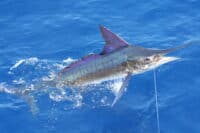As people shelter in place around the world to help stop the spread of the coronavirus, reports have surfaced about animals appearing in areas where they are not usually seen. Sea lions are sunning themselves in parking lots in Argentina; jaguars are prowling city streets in Mexico’s Yucatan Peninsula; monkeys are brawling over food in Thailand; and goats are running roughshod in a Welsh village.
24/7 Tempo has compiled a list of animals making an appearance in urban areas while humans are in lockdown. We reviewed media reports to create our list and also analyzed data from the International Union for Conservation of Nature and Natural Resources’ red list to determine the threatened status of animals that are included in the story.
Click here to see animals making an appearance while humans are in lockdown
Ever since early March, when much of the world began self-isolating to try and halt the spread of the coronavirus, there have been many reports on traditional and social media about animals “reclaiming” nature. An analysis by the Corona Virus Facts Alliance — led by journalism research organization Poynter Institute — found that the misinformation about animals worldwide has been increasing since early January.
Many of these reports, such as dolphins appearing in the now-clear canals of Venice, llamas blocking a road in Ecuador, or elephants passed out in a field in China from drinking too much corn wine, have since been debunked.
But the belief that animals are “reclaiming” environs temporarily abandoned by humans might be more a yearning of homebound people grasping for hope during a bleak period. With much more time on their hands, people are observing nature more and perhaps seeing animals they might have ignored before the pandemic forced a shutdown. Susan Clayton, Whitmore-Williams Professor of Psychology and chair of Environmental Studies at the College of Wooster in Wooster, Ohio, believes that might be the case.
“I’ve seen it suggested that the animals are no more present than they were pre-pandemic, but we just notice them more,” said Clayton in email. “However, it would not surprise me if they feel free to return to areas that used to be too busy for them to feel comfortable. The interesting thing to me is that people seem to want to believe it. Watching nature is associated with positive emotions and tends to be a way to reduce stress.”
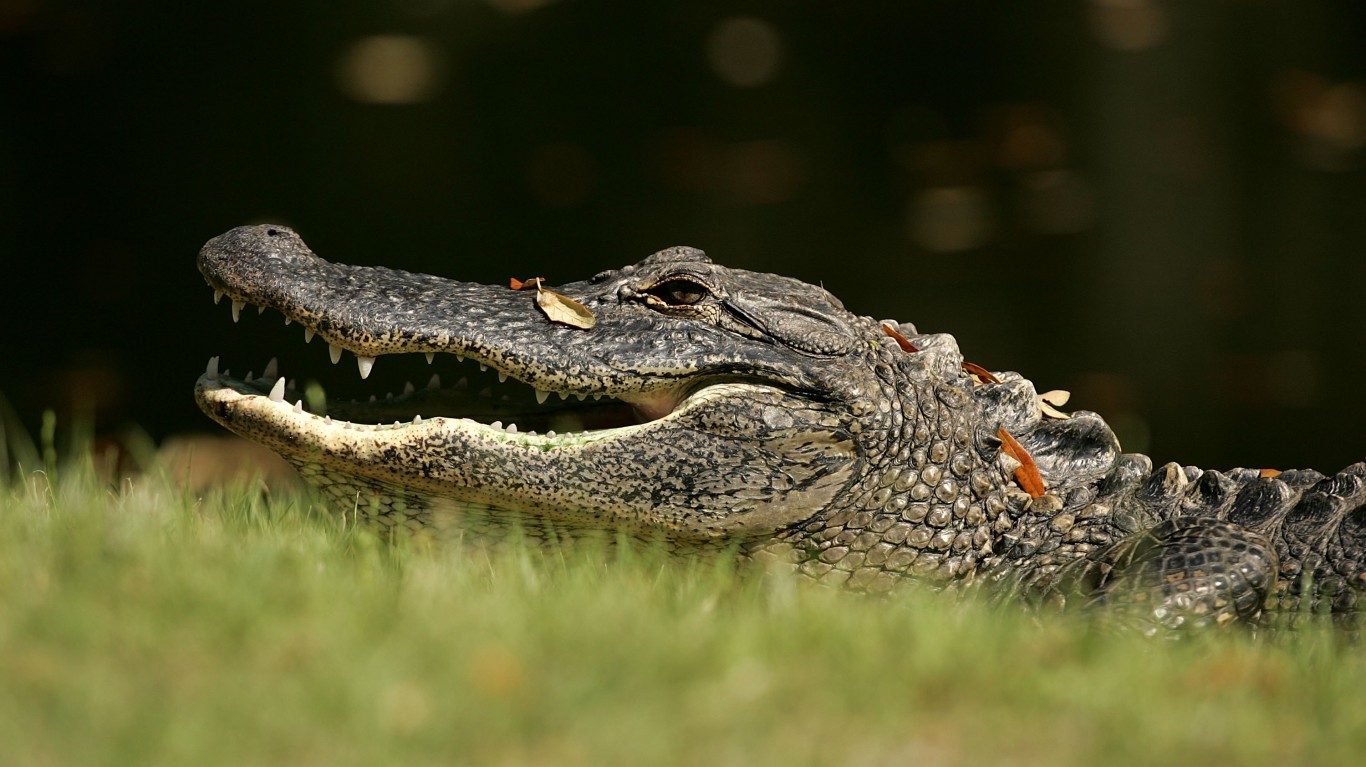
1. Alligators
> Location where seen: Myrtle Beach, South Carolina
An alligator took a stroll around the Barefoot Landing mall in Myrtle Beach, South Carolina, on April 3, an episode that was captured on video. About 106 miles south in Folly Beach, police were notified that there was a gator on the beach. They called the South Carolina Department of Natural Resources, which told them there was nothing they could do. The officials said on Facebook that with fewer people on the beach, “it will not be uncommon to see more wildlife out and about.”
[in-text-ad]
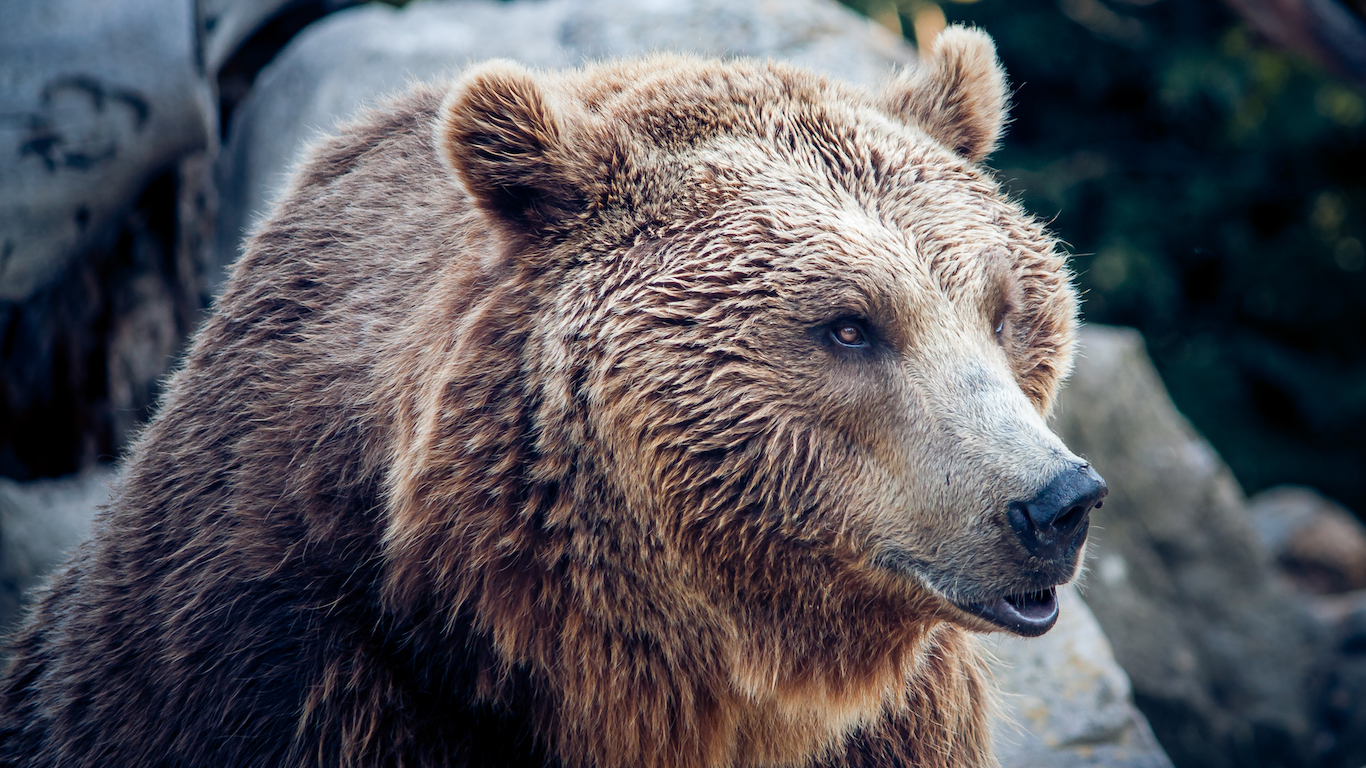
2. Bears
> Location where seen: Asturias, Spain
The northern part of Spain has the largest population of wild brown bears in western Europe and they are a tourist attraction. Their population has been growing. According to bear conservation group Fundación Oso Pardo (the Brown Bear Foundation), the animal’s numbers have been increasing since 2004, and may now total 250. In the late 1980s, their numbers had fallen to possibly just 50. With fewer people on the streets in Asturias in northwestern Spain, a bear was spotted prowling the streets in March.
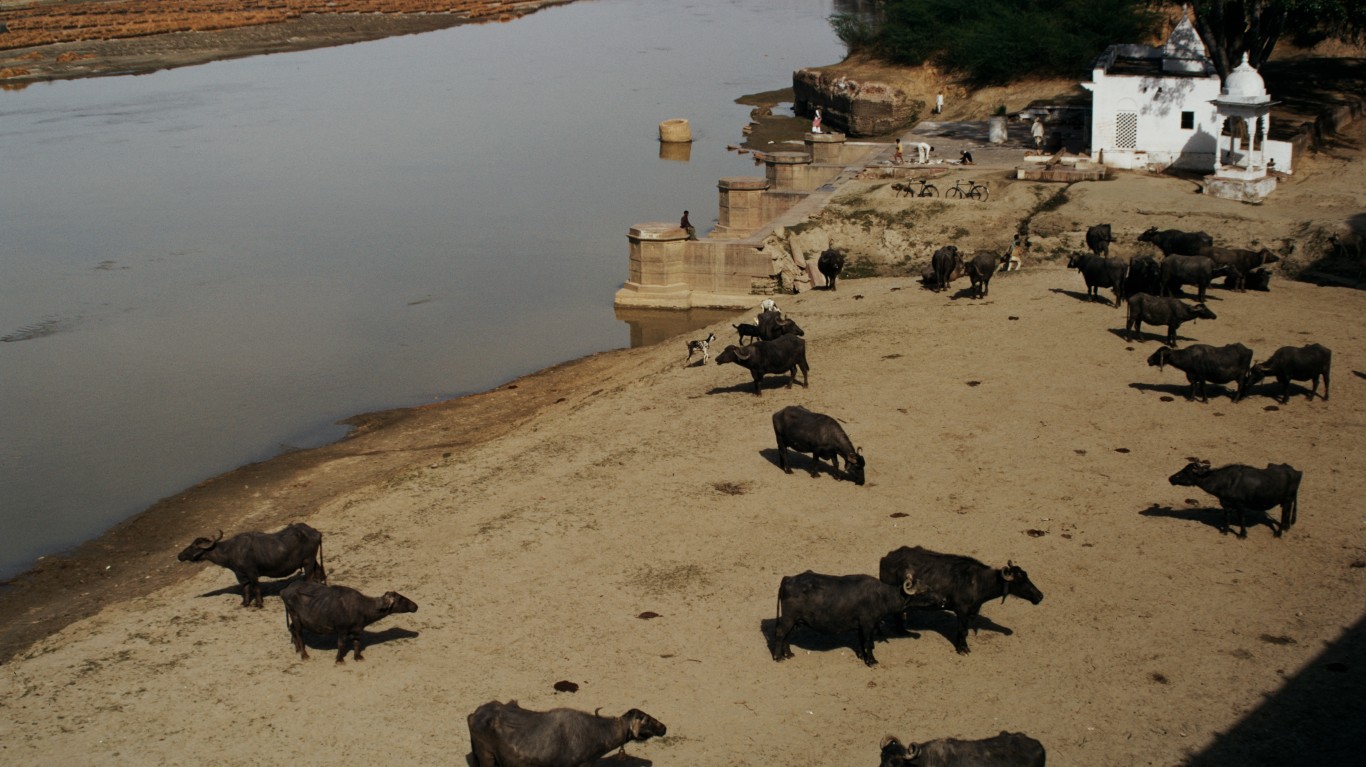
3. Murrah buffalo herd
> Location where seen: New Delhi, India
Lockdown measures mean fewer cars on highways in New Delhi, where a herd of Murrah buffalo were spotted strolling down a road on April 8. The buffalo are famous for producing prolific amounts of milk.
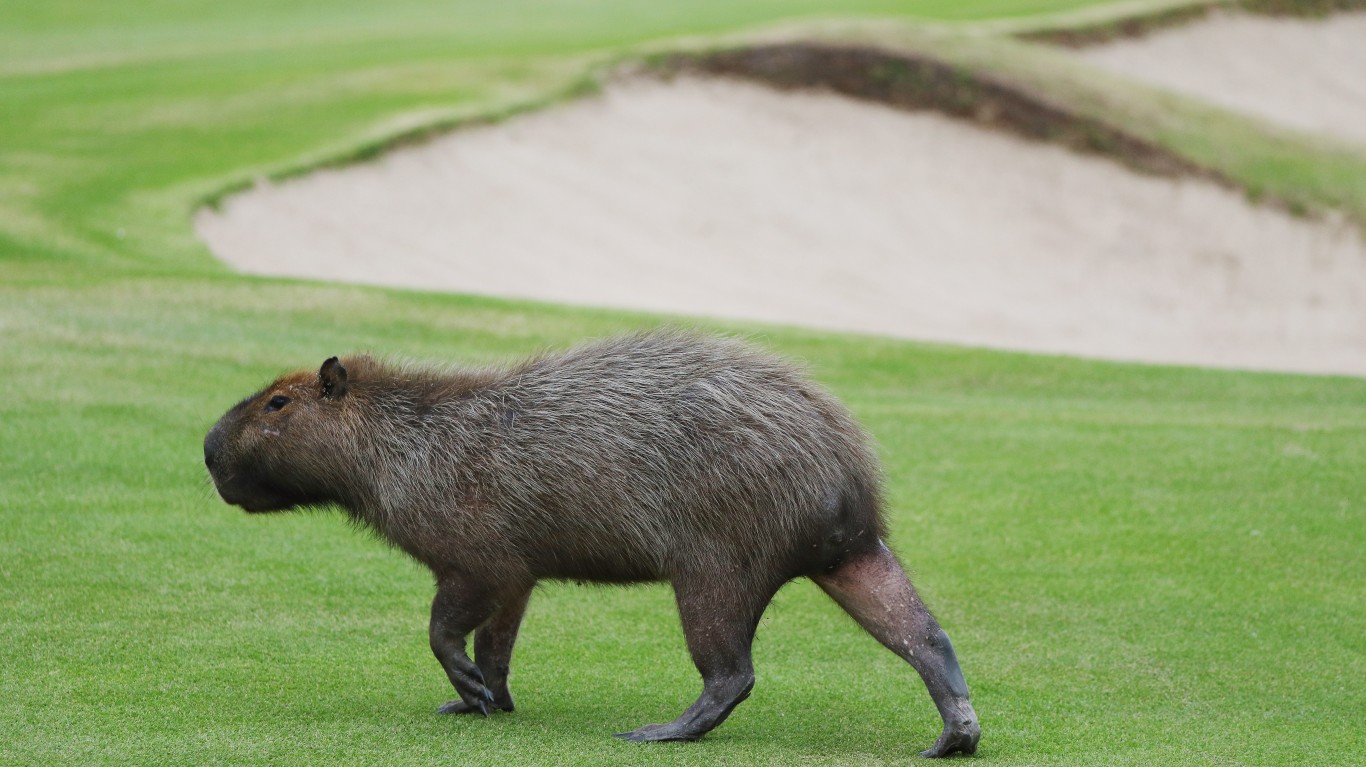
4. Capybara
> Location where seen: Buenos Aires, Argentina
Packs of capybara were seen roaming the deserted streets of the suburbs of Buenos Aires, Argentina, on March 29. The hairy capybara, native to Central and South America, is the largest rodent in the world, standing about 2 feet tall at the shoulder and weighing up to 174 pounds. It has no tail, a face resembling a beaver, and slightly webbed feet.
[in-text-ad-2]
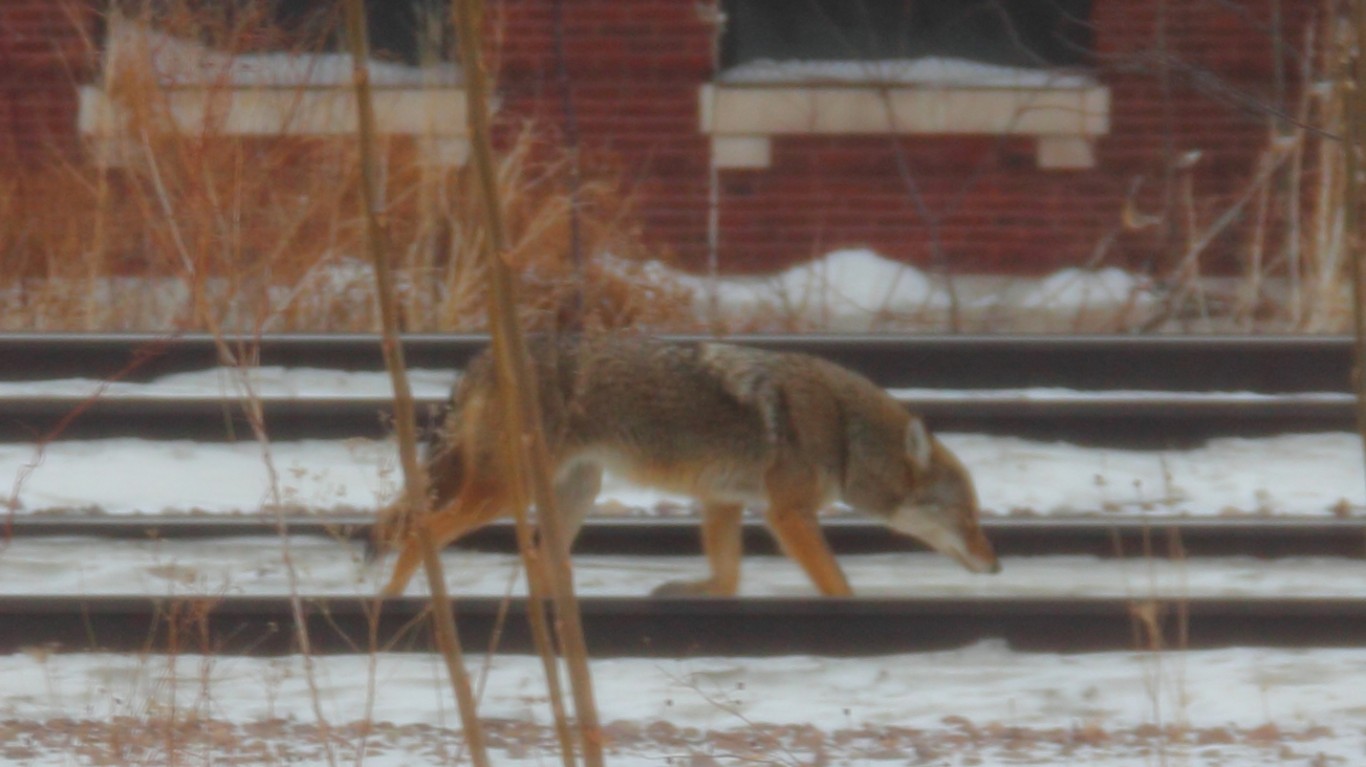
5. Coyotes
> Location where seen: Chicago, Illinois
On April 6, a bold coyote was seen prowling a desolate Michigan Avenue in Chicago, which has been locked down because of concern over COVID-19. Scientists estimate there may be as many as 4,000 coyotes living in the Chicago area. Four years ago, the city passed an ordinance that created a plan to manage the animals.
6. Deer
> Location where seen: London, United Kingdom
With fewer cars and pedestrians because of social isolation, a herd of deer left the confines of a nearby park to settle on the open spaces and feed on the greenery of a housing estate in east London in early April.
[in-text-ad]

7. Dolphins
> Location where seen: Sardinia, Italy
With ferry traffic reduced at the Sardinian port city of Cagliari, dolphins have become frequent visitors to the waters around the island’s capital. Video of a pod of the mammals swimming in Sardinian waters was falsely attributed to the canals of Venice.
8. Elephants
> Location where seen: Chachoengsao, Thailand
In mid-April, a herd of about 50 elephants emerged from the jungle and thundered across a road in Chachoengsao, a province in south-central Thailand, and entered the jungle on the other side of the road. Police blocked off the road to allow the massive animals to pass.
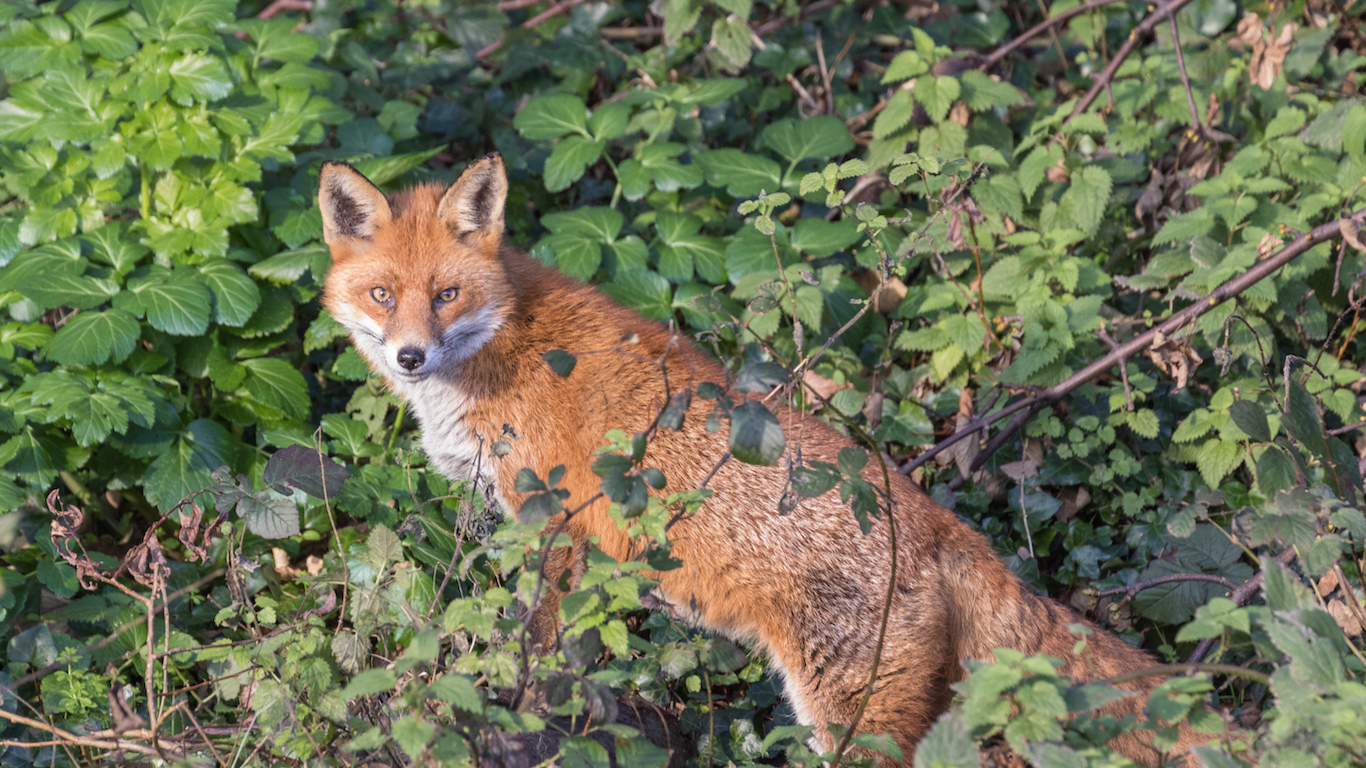
9. Foxes
> Location where seen: Various cities
Foxes have been spotted in many cities all over the world since the pandemic has caused countries to lock down. A red fox was seen on a nearly empty Grafton Street in Dublin, Ireland, on April 28, a street usually bustling with shoppers and tourists. The red fox is the only species of the animal found in Ireland.
[in-text-ad-2]
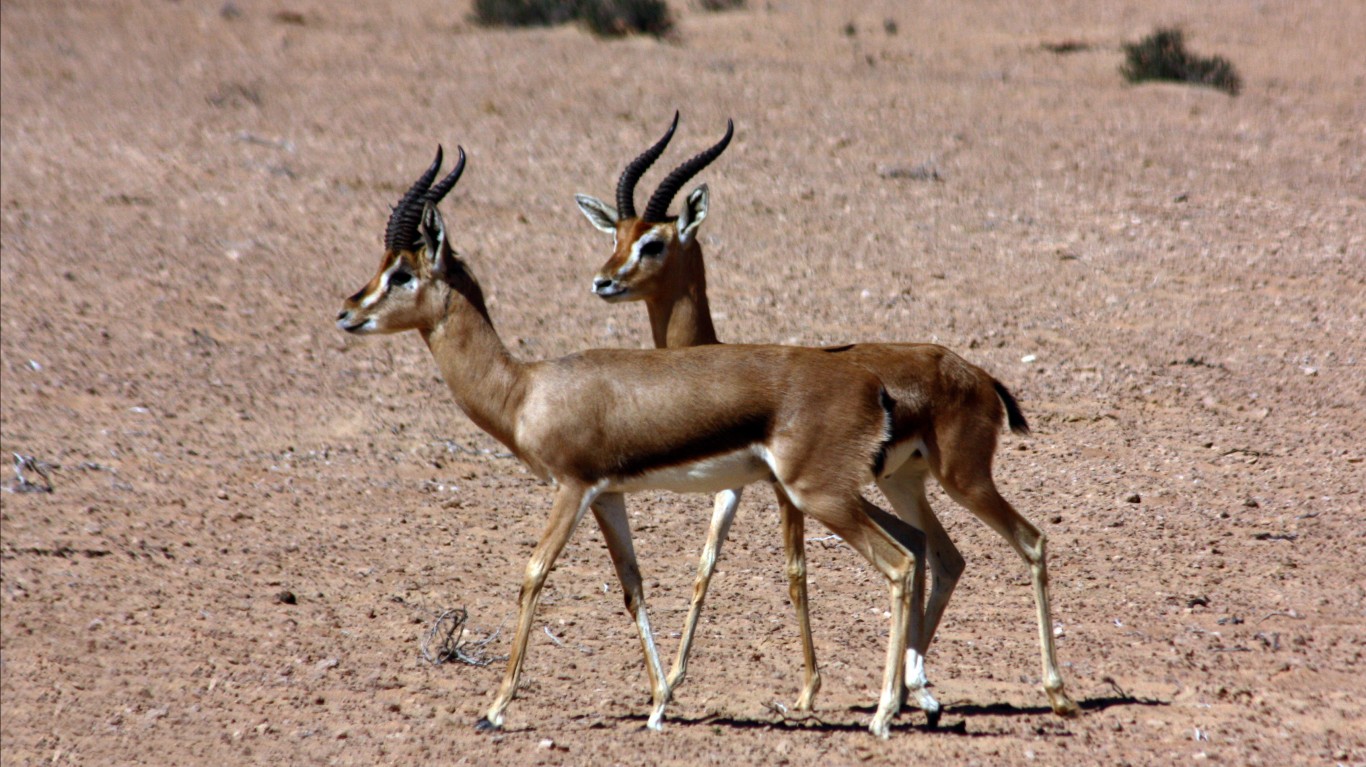
10. Gazelles
> Location where seen: Dubai, United Arab Emirates
Arabian sand gazelles, one of two species found in the United Arab Emirates, were spotted in urban areas around Dubai. The International Union for Conservation of Nature and Natural Resources classifies the animal as vulnerable, numbering between 1,750 to 2,150 mature animals, and says the current population is decreasing.
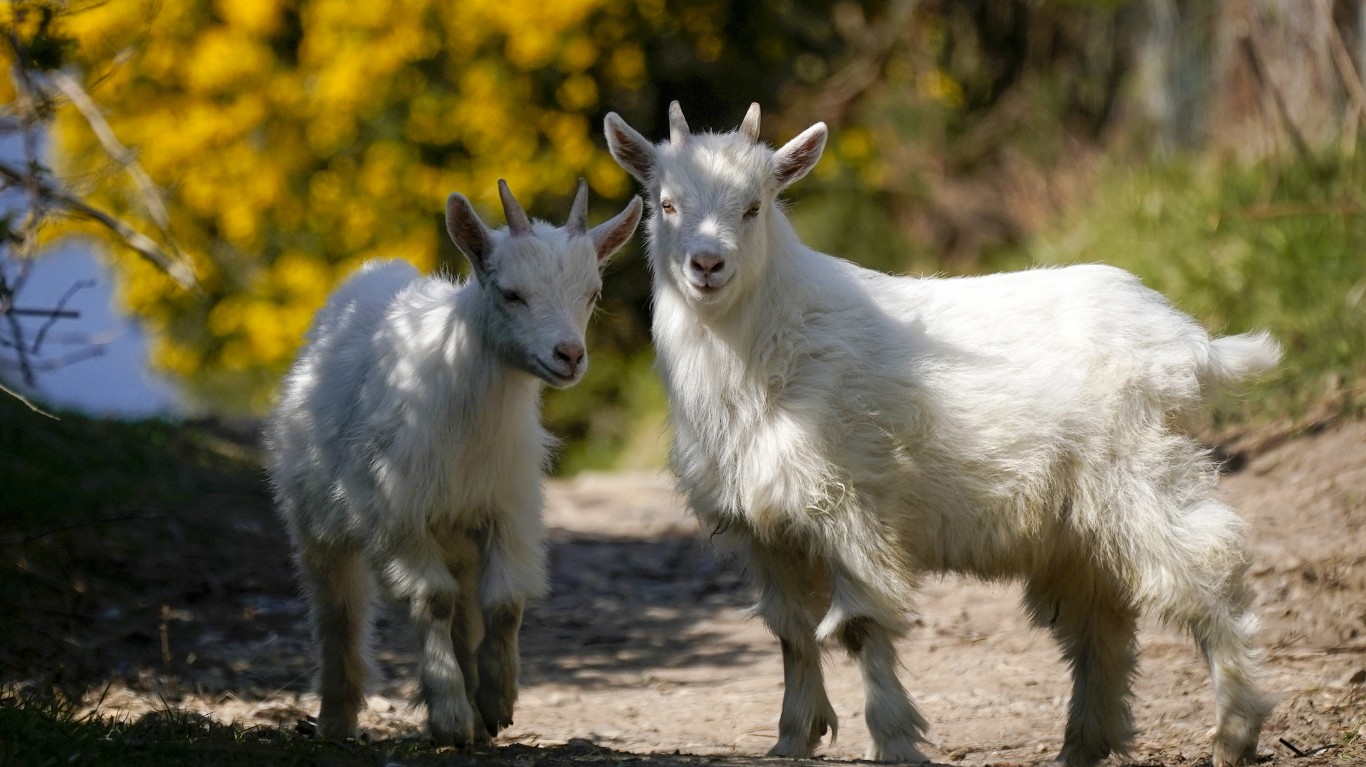
11. Great Orme Kashmiri goats
> Location where seen: Llandudno, Wales
Perhaps the most viewed video of animals invading space usually inhabited by humans was of a tribe of Great Orme Kashmiri goats taking over the village of Llandudno, Wales. The goats were a gift to the village from Queen Victoria in the 19th century and live in a park. On March 30, they came to Llandudno. They raced down streets and lanes, and munched on shrubbery and tree branches.
[in-text-ad]
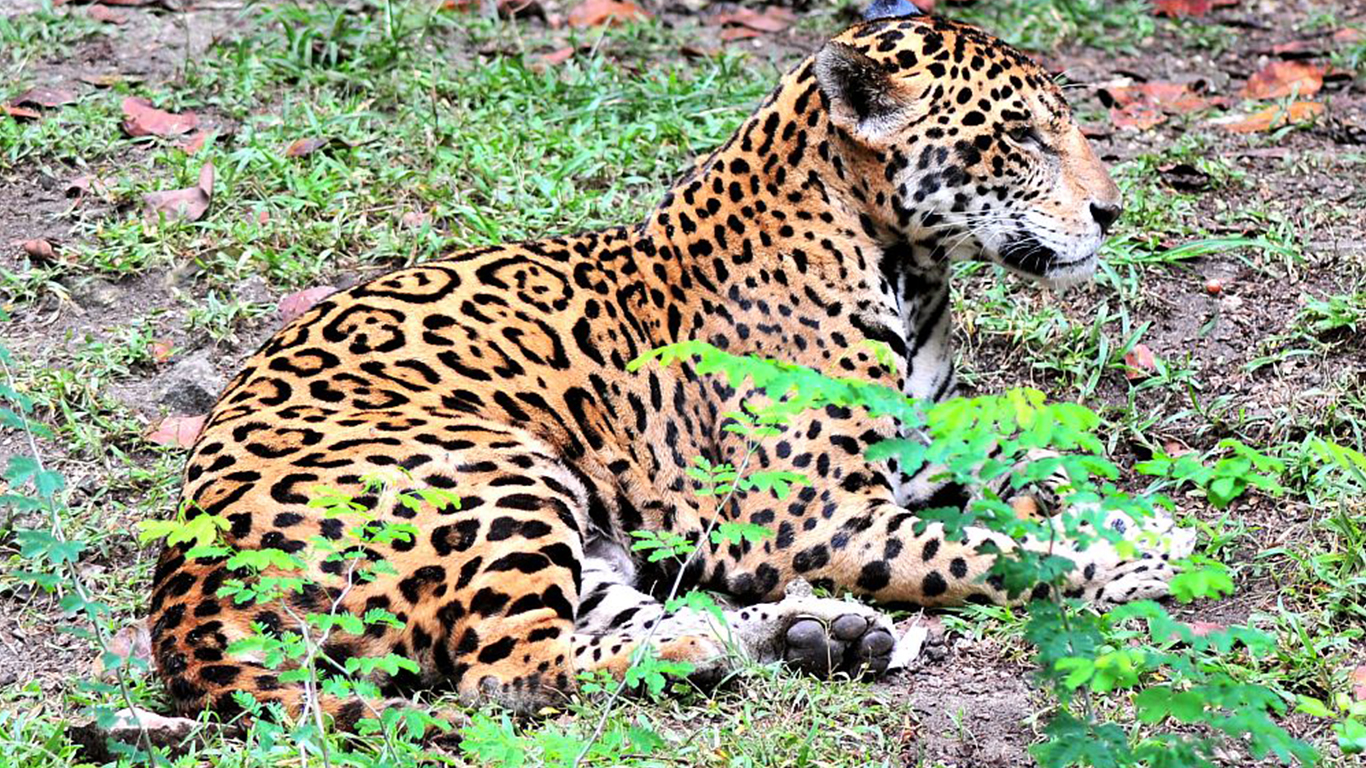
12. Jaguar
> Location where seen: Quintana Roo, Yucatan, Mexico
For many college kids, there was no spring break to destinations like Mexico because of the pandemic. That was fine for a jaguar that took to the streets of Quintana Roo, Yucatan, Mexico, on March 27. Jaguars are an endangered species in Mexico, where they face threats such as habitat loss and illegal hunting. Conservationists and scientists have created a private natural reserve in Mexico called El Eden to protect the animals.
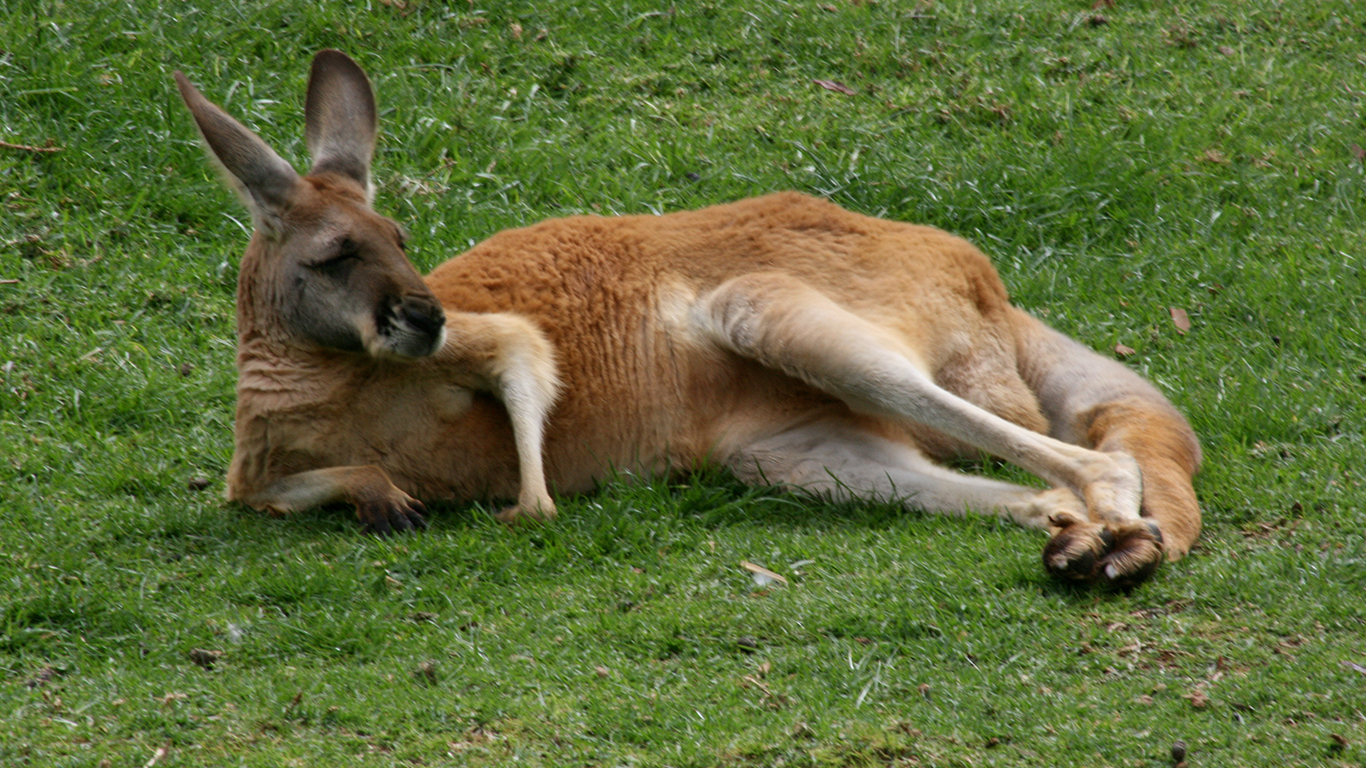
13. Kangaroo
> Location where seen: Adelaide, Australia
In April, one of Australia’s iconic animals, a kangaroo, was seen bounding down King William Road in the nearly deserted environs of the southern Australian city of Adelaide. There are four species of kangaroo in Australia: eastern grey, western grey, common wallaroo, and the red kangaroo, none of which are endangered, according to the International Union for Conservation of Nature and Natural Resources.
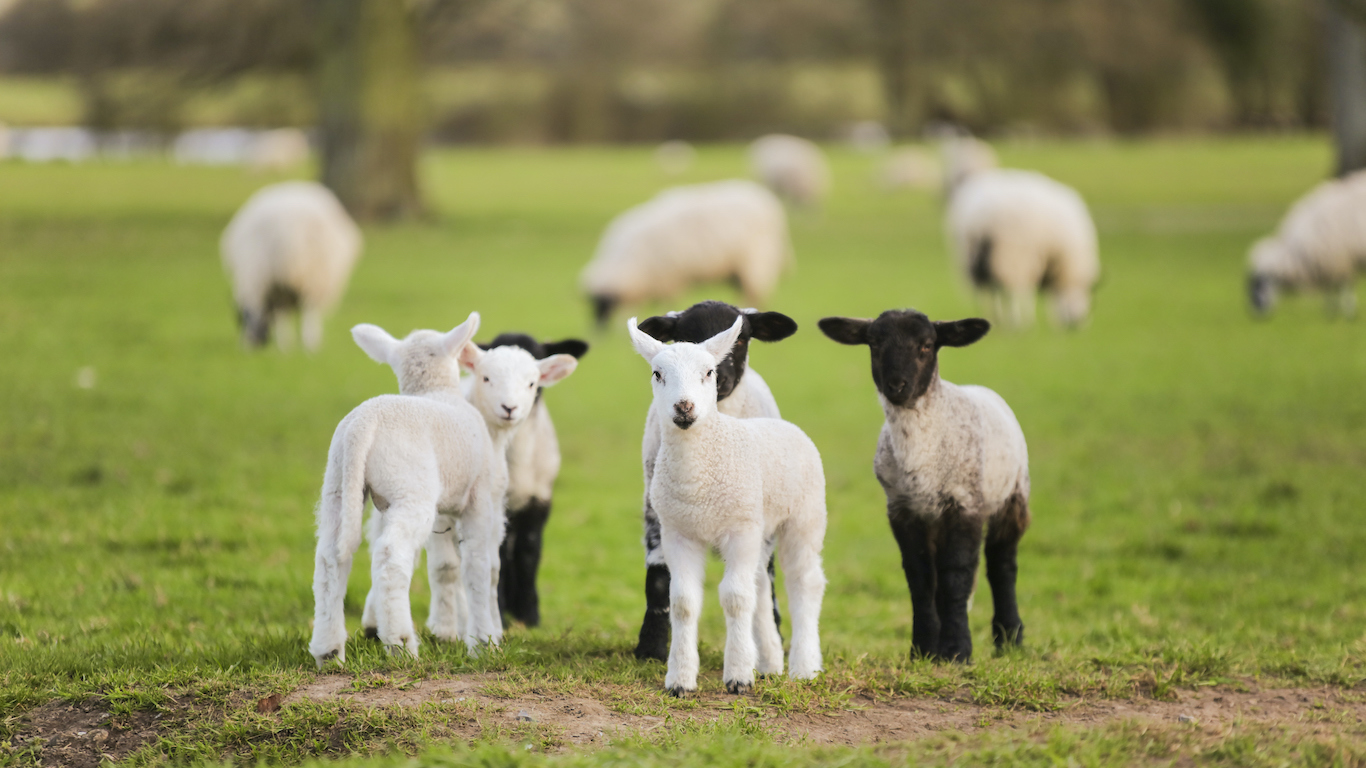
14. Lambs
> Location where seen: Preston, United Kingdom
A flock of lambs in Preston, United Kingdom — about 36 miles north of Liverpool in western England — apparently didn’t get the memo about social distancing and took the opportunity to jump on a merry-go-round on a playground in early April.
[in-text-ad-2]
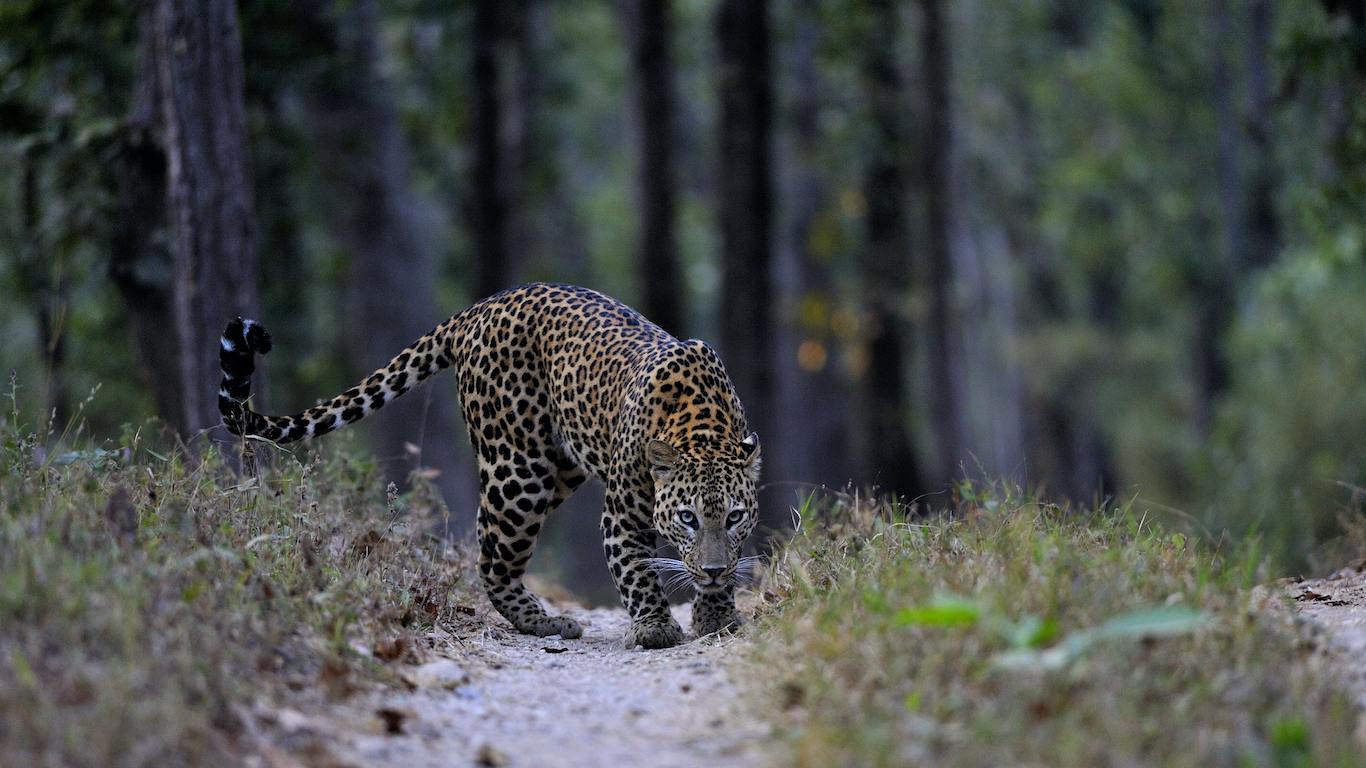
15. Leopard
> Location where seen: Chandigarh, India
A leopard was spotted in the northern Indian city of Chandigarh on March 30. The animal came from the nearby Sukhna Wildlife Sanctuary, which is also home to wild boar, pangolin, mongoose, the Indian civet, the Indian python and Russell’s viper. The leopard is considered vulnerable by the International Union for Conservation of Nature and Natural Resources.
16. Macaques monkeys
> Location where seen: Lopburi, Thailand
The macaque monkeys ran amok through the streets of Lopburi, Thailand, in early March. The city is famous for its sprawling monkey population, which is fed by tourists. With the pandemic reducing tourism, the primates fanned out looking for food and brawled over what food they could find. There are five types of macaques in Thailand, and three of them — the stump-tailed macaque, Assam macaque, and the pig-tailed macaque — are considered vulnerable or near threatened by the International Union for Conservation of Nature and Natural Resources.
[in-text-ad]

17. Mountain lions
> Location where seen: Boulder, Colorado
Residents of Boulder, Colorado, might be glad the pandemic is keeping them inside. In late March, several mountain lions were spotted prowling through a residential section of northern Boulder.

18. Killer whales
> Location where seen: Indian Arm, Vancouver, British Columbia
A pod of killer whales ventured into Indian Arm, a salt-water fjord near Vancouver in British Columbia. Jim Hanson, who lives in the area, posted photos of the massive animals, tweeting that it was the first time he had seen whales that far up the waterway in his 59 years of coming to the area.
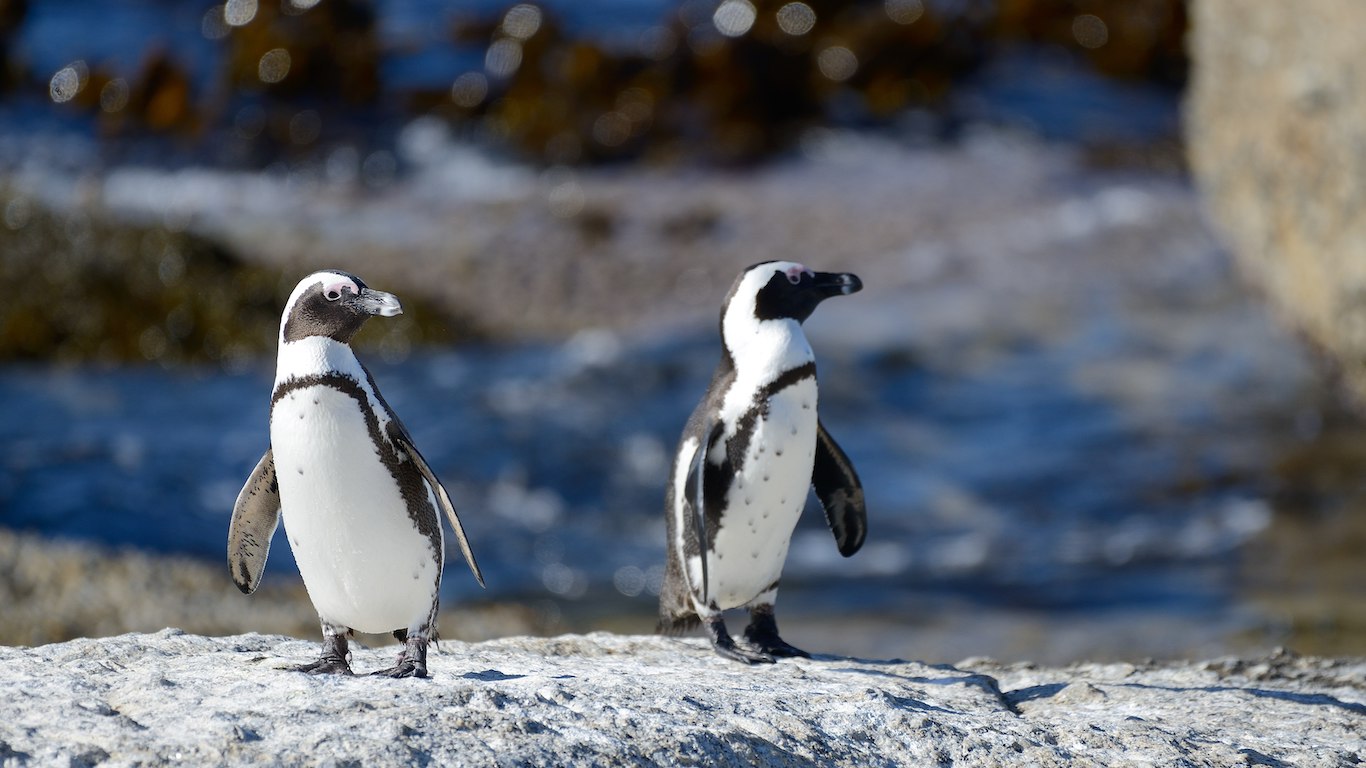
19. Penguins
> Location where seen: Simon’s Town, South Africa
A waddle of African penguins, taking advantage of the lockdown in South Africa, took in the sights of Simon’s Town, a neighborhood of Cape Town. The animals are also known as “jackass” penguins because of their “loud, donkey-like bray,” according to the conservation organization Bird Life. There is an African penguin colony adjacent to Simon’s Town. The African penguins are only found in South Africa and Namibia and considered endangered by the International Union for Conservation of Nature and Natural Resources, which says there are 50,000 adult African penguins.
[in-text-ad-2]
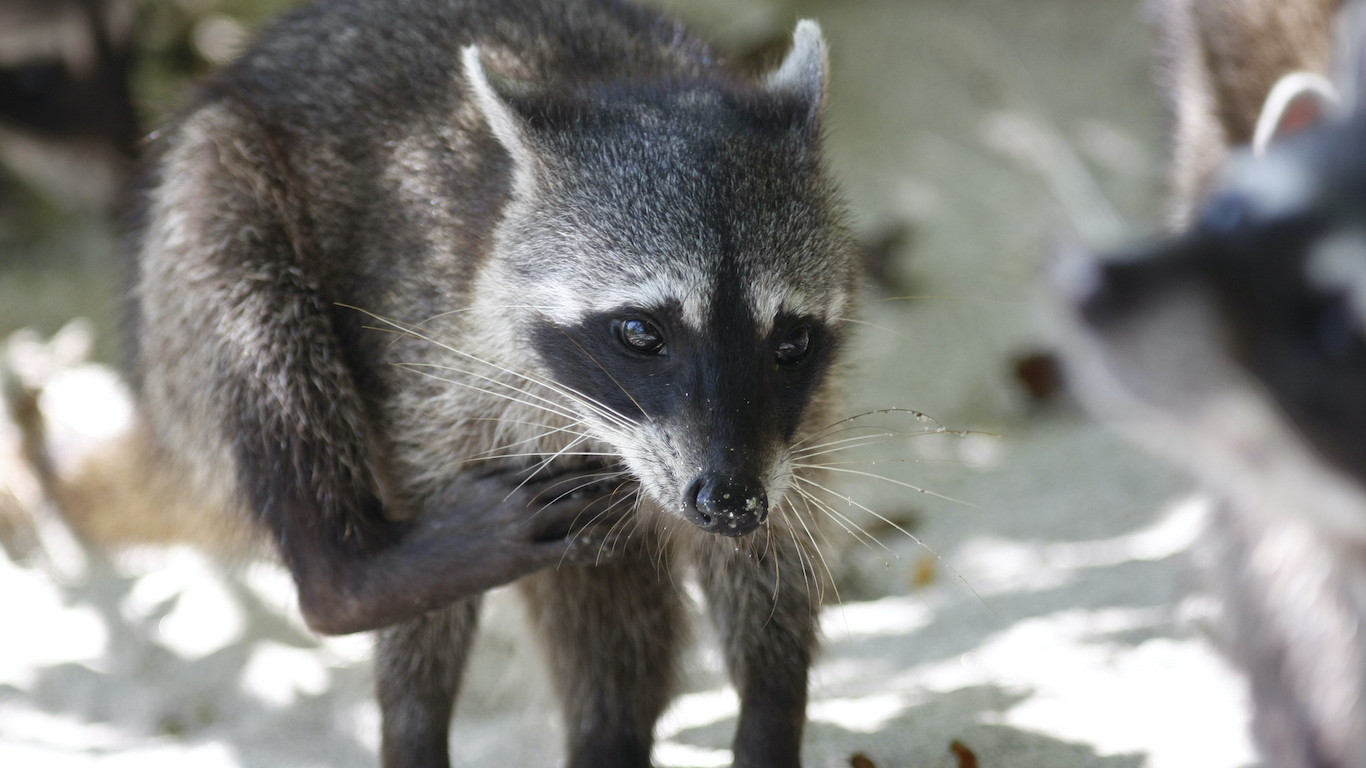
20. Raccoons
> Location where seen: San Felipe, Panama
With fewer tourists cavorting in the surf this spring, the empty beach at San Felipe, Panama, was left for raccoons to call their own.
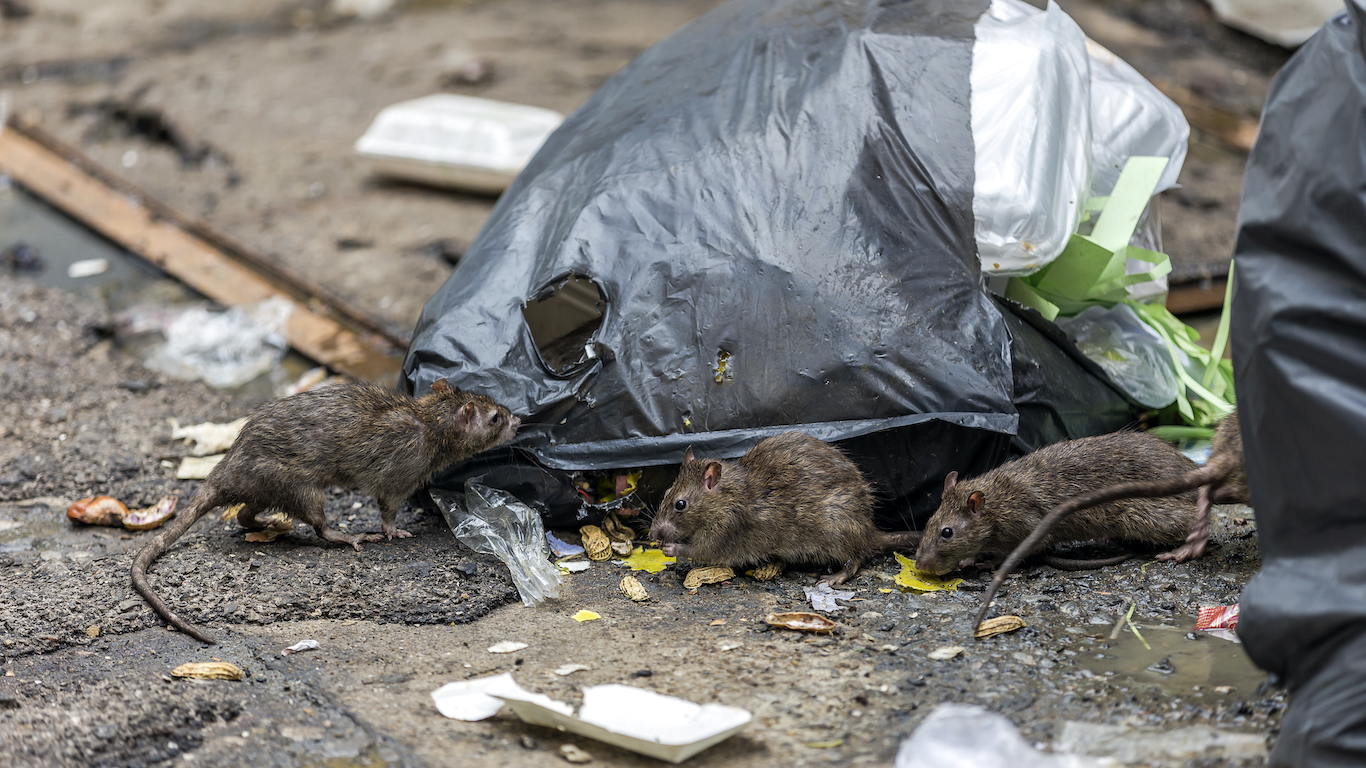
21. Rats
> Location where seen: New Orleans, Louisiana
Rats have always been a detested feature of major urban areas. But with the coronavirus lockdown, and restaurants largely closed, there is less food in trash cans and dumpsters for the rodents. Rats are becoming bolder, searching for food out in the open. That has been the case in cities such as Chicago and New Orleans.
[in-text-ad]
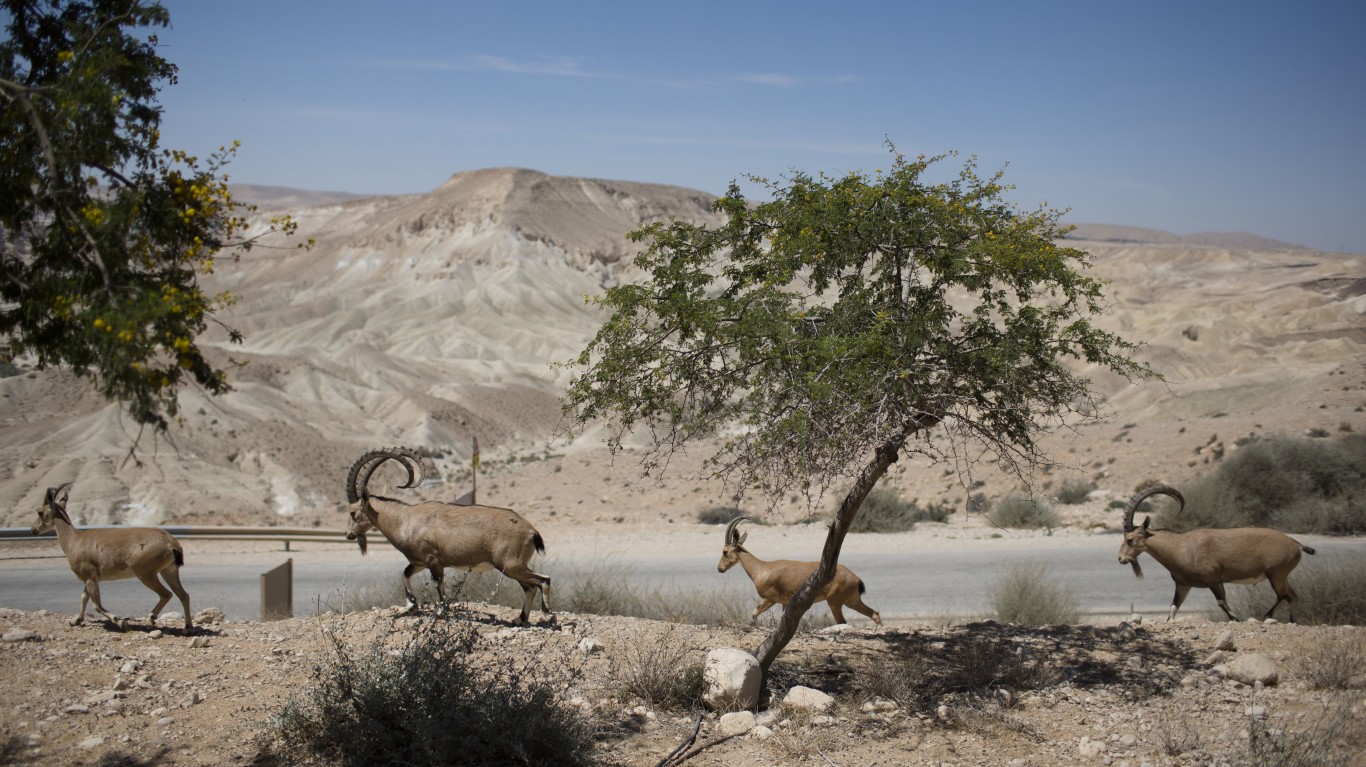
22. Nubian ibex
> Location where seen: Eilat, Israel
In late March, people in the Israeli beach town of Eilat were startled to see several Nubian ibex walking along the promenade, an area that has become much less crowded because of social distancing. Israel has made a concerted effort to preserve the ibex, which had been hunted to near extinction. The ibex is found in the desert mountain areas of Jordan and Israel, as well as in Saudi Arabia, Egypt, and Yemen. Fewer than 3,000 ibexes are estimated to remain in the wild, about half of them in Israel.
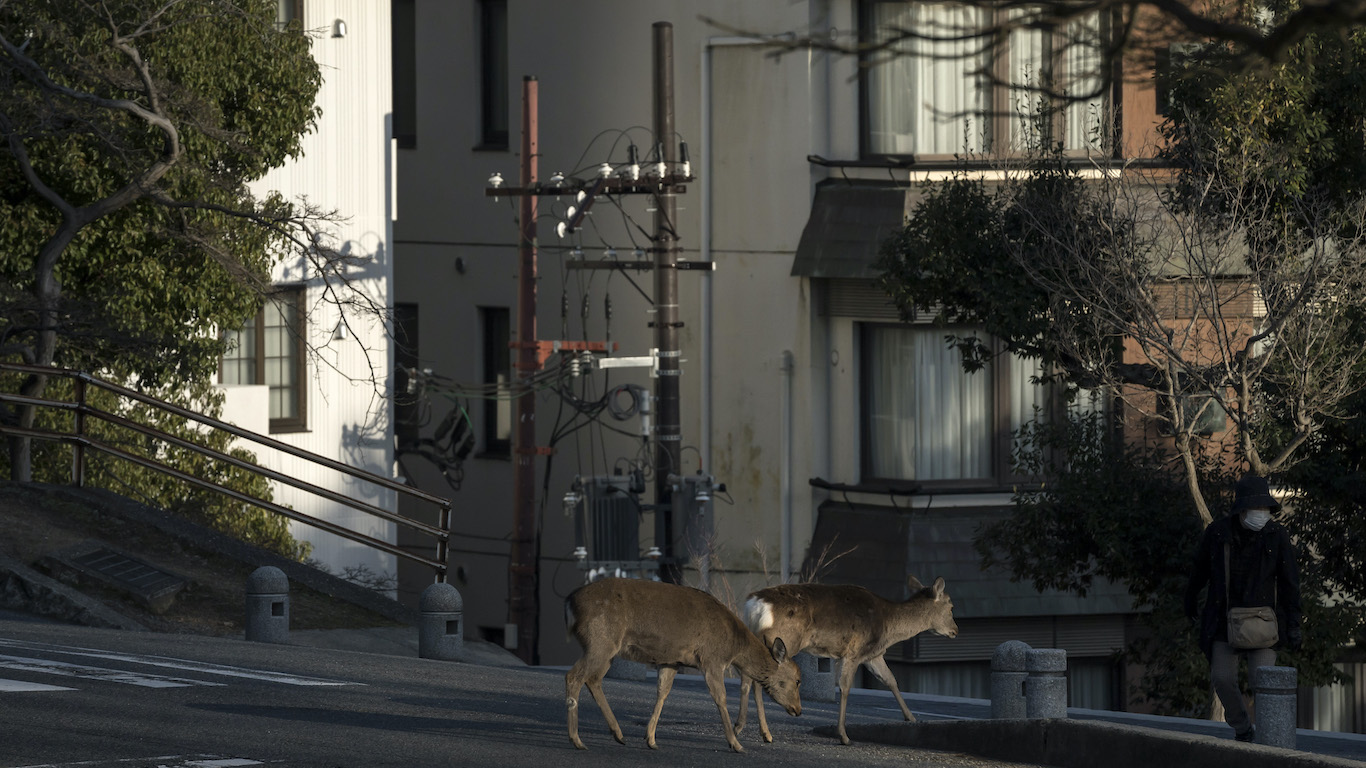
23. Sika deer
> Location where seen: Nara, Japan
Another widely circulated video and photograph of wildlife visiting areas usually inhabited by people was of the sika deer in residential areas of Nara, Japan. The deer left their park habitat, where visitors would give them rice snacks, to search for food. Videos showed them munching on flowers and plants and wandering around subway stations.
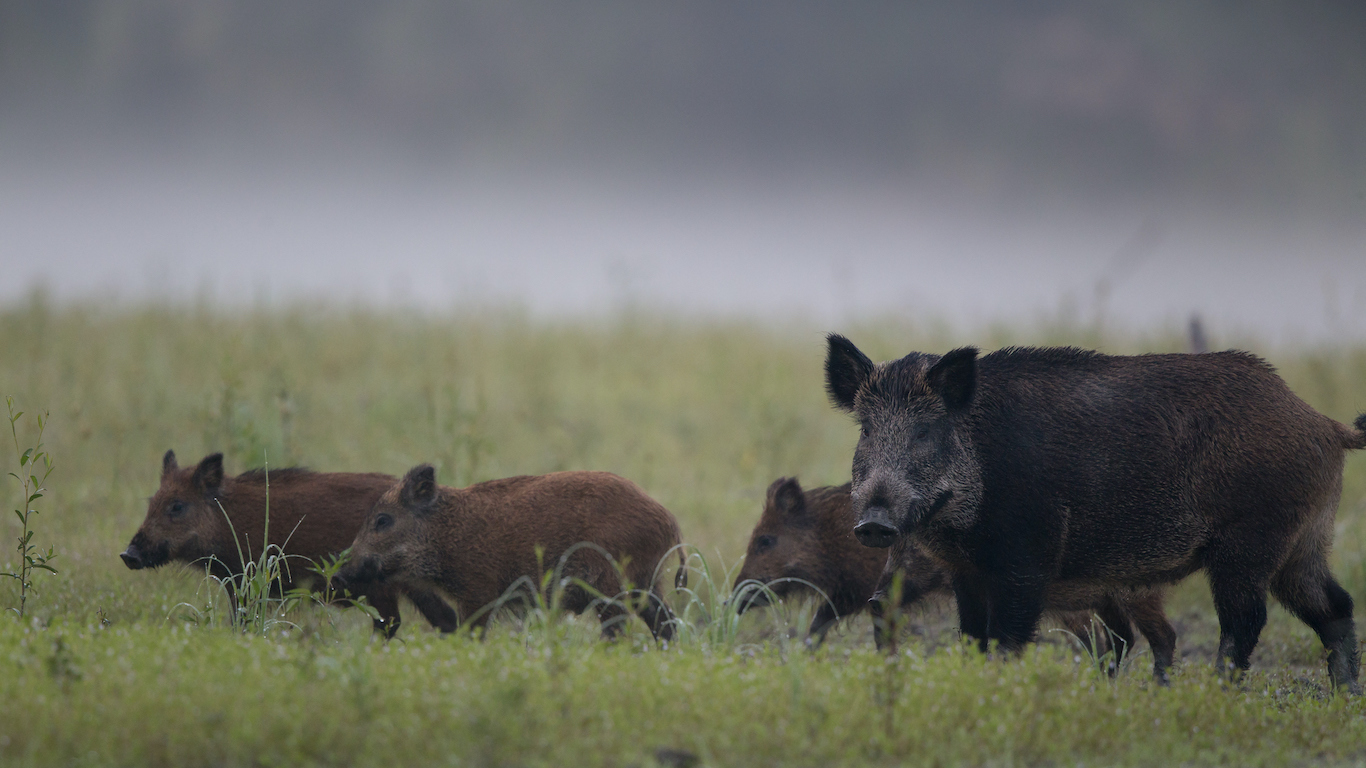
24. Wild boar
> Location where seen: Various cities
Stepping into the void left by humans in urban areas have been wild boar, which have been seen in Barcelona, Spain; Ajaccio, Corsica; and Haifa, Israel, among other places. Boar and deer are the animals most often seen in towns in Europe.
[in-text-ad-2]
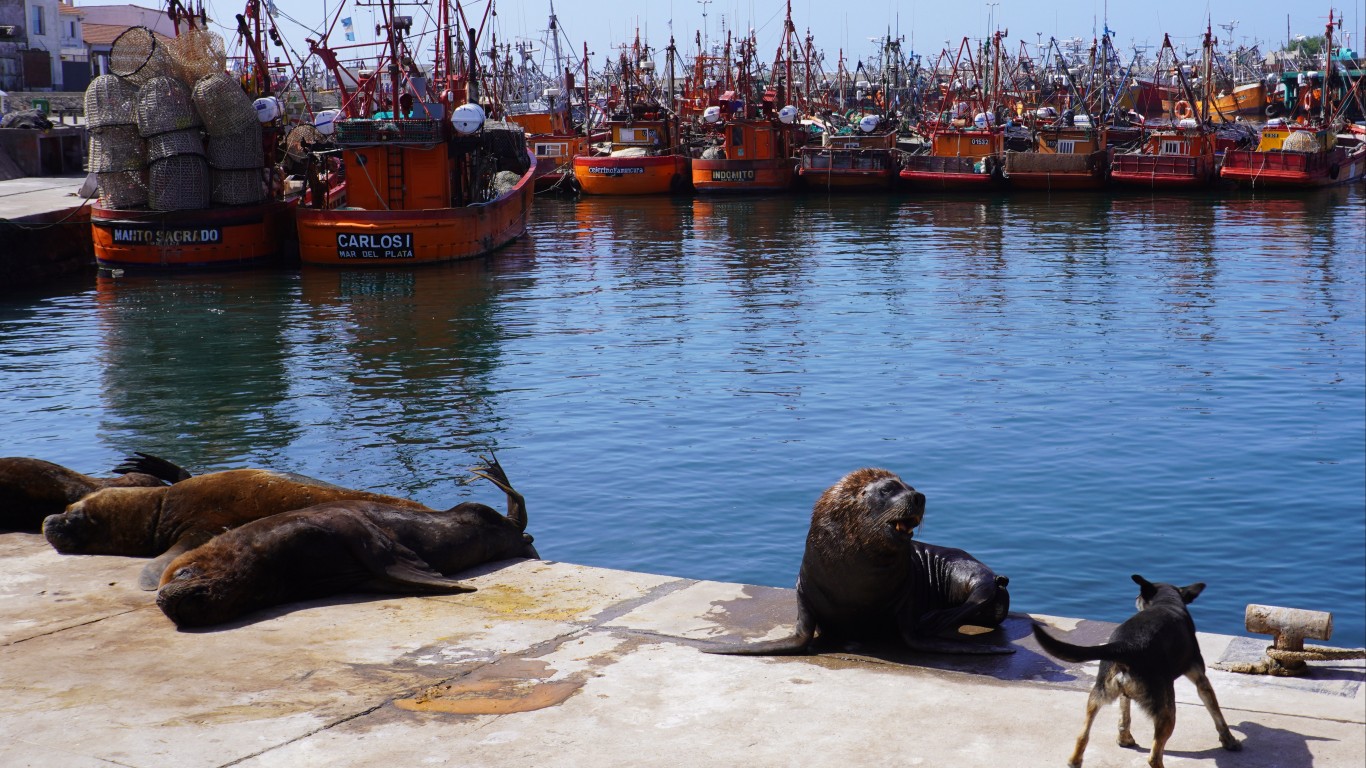
25. Sea lions
> Location where seen: Mar del Plata, Argentina
Sea lions are frequently seen off the coast of South American countries, but the lockdown has created situations for the animals to venture on land. These mammoth animals came ashore and were seen reclining in parking lots or hanging around shops in Mar del Plata on the coast of Argentina.
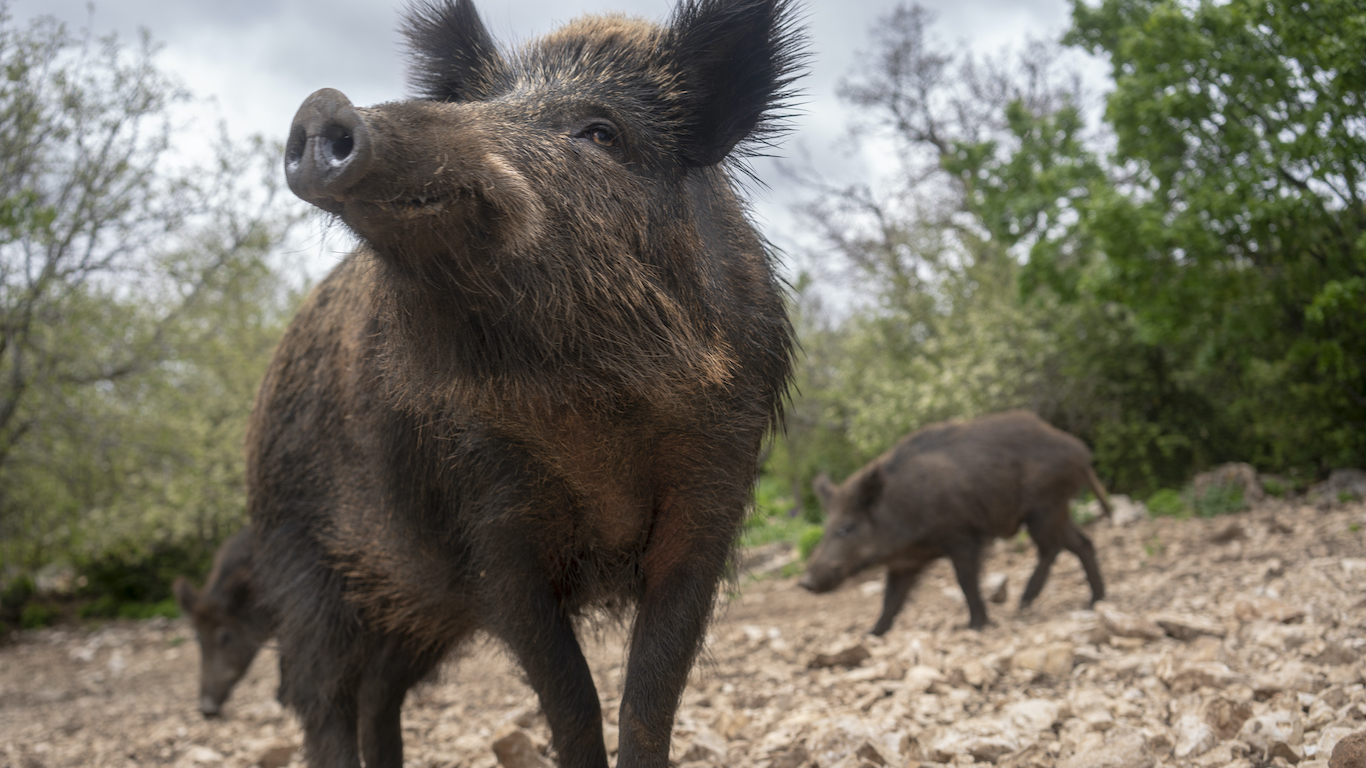
26. Wild pigs
> Location where seen: Paris, France
Paris in springtime is usually crowded with tourists and is one of the most visited cities in the world. But with tourism way down and residents huddling inside because of the lockdown, wild pigs took to the streets of the French capital.
[in-text-ad]

27. Wild pumas
> Location where seen: Santiago, Chile
Wild pumas were seen on the streets of Santiago, the capital city of Chile, with one captured on video leaping on and climbing over a wall. One of the predators was tranquilized and another was captured and released in the mountains nearby. Marcelo Giagnoni, the nation’s director of Agriculture and Livestock Service, called the situation in Chile a unique phenomenon in history, with a total health quarantine.
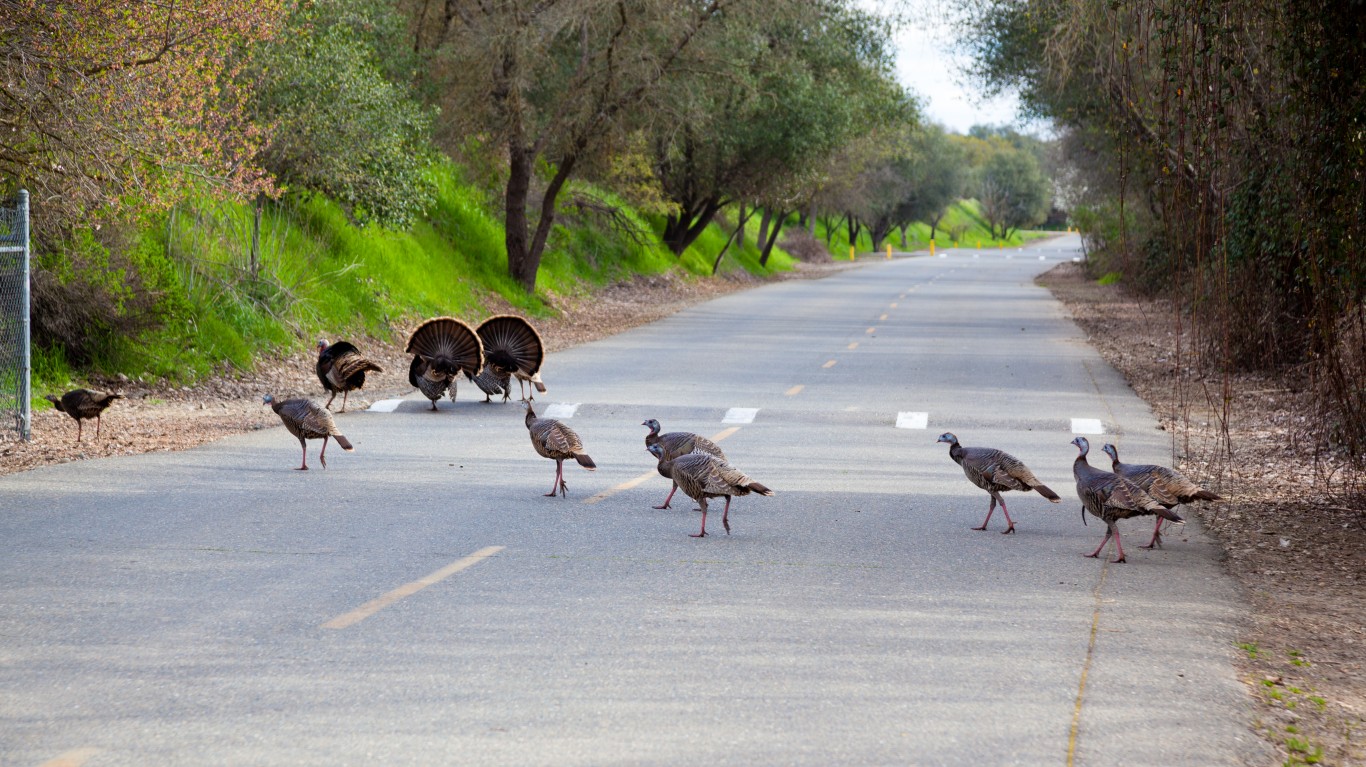
28. Wild turkeys
> Location where seen: Oakland, California
The Bay Area in California was one of the first to shut down as six counties with 6 million people were locked down on March 16. Four days later, a gang of wild turkeys was spotted on the playground of an elementary school in Oakland. Turkeys are not indigenous to California. They were introduced from Texas by the California Fish and Game Commission as a trophy hunting bird in the 20th century.
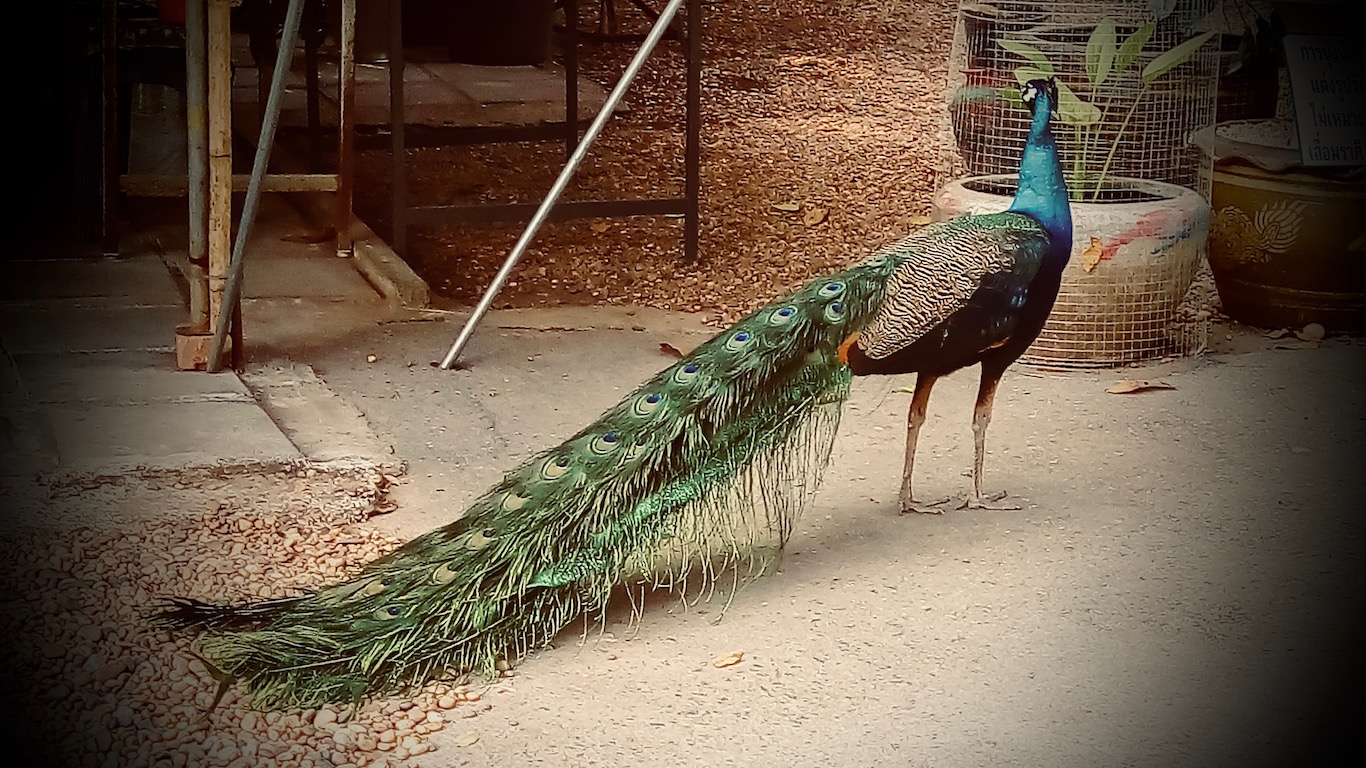
29. Peafowl
> Location where seen: Mumbai, India
An ostentation of peafowl apparently left their habitat in the Doongerwadi Forest in India to hit the streets of Mumbai, India, in early April. There are three species of the bird — the blue peacock lives in India and Sri Lanka, the green peacock inhabits Java and Myanmar, and the Congo peacock can be found in African rainforests.
[in-text-ad-2]
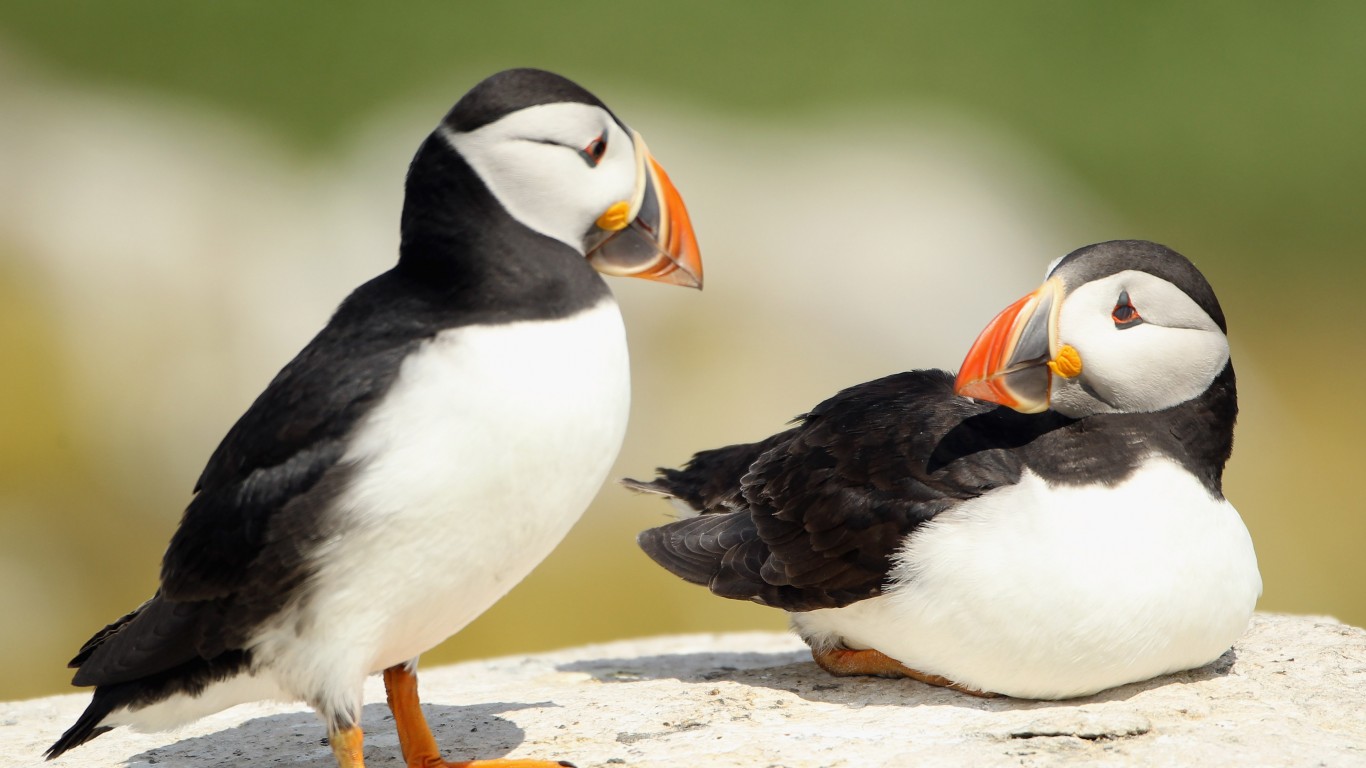
30. Puffins
> Location where seen: Calanque National Park, France
Atlantic puffins that live in the protected areas of France’s Calanques National Park near Marseille on the Mediterranean, are venturing into areas normally occupied by people. The International Union for Conservation of Nature and Natural Resources considers the puffin vulnerable. The IUCN estimates the number of puffins between 12 million and 14 million and says the population trend is decreasing because of hunting, pollution, climate change, and diseases.
It’s Your Money, Your Future—Own It (sponsor)
Are you ahead, or behind on retirement? For families with more than $500,000 saved for retirement, finding a financial advisor who puts your interest first can be the difference, and today it’s easier than ever. SmartAsset’s free tool matches you with up to three fiduciary financial advisors who serve your area in minutes. Each advisor has been carefully vetted and must act in your best interests. Start your search now.
If you’ve saved and built a substantial nest egg for you and your family, don’t delay; get started right here and help your retirement dreams become a retirement reality.
Thank you for reading! Have some feedback for us?
Contact the 24/7 Wall St. editorial team.
 24/7 Wall St.
24/7 Wall St.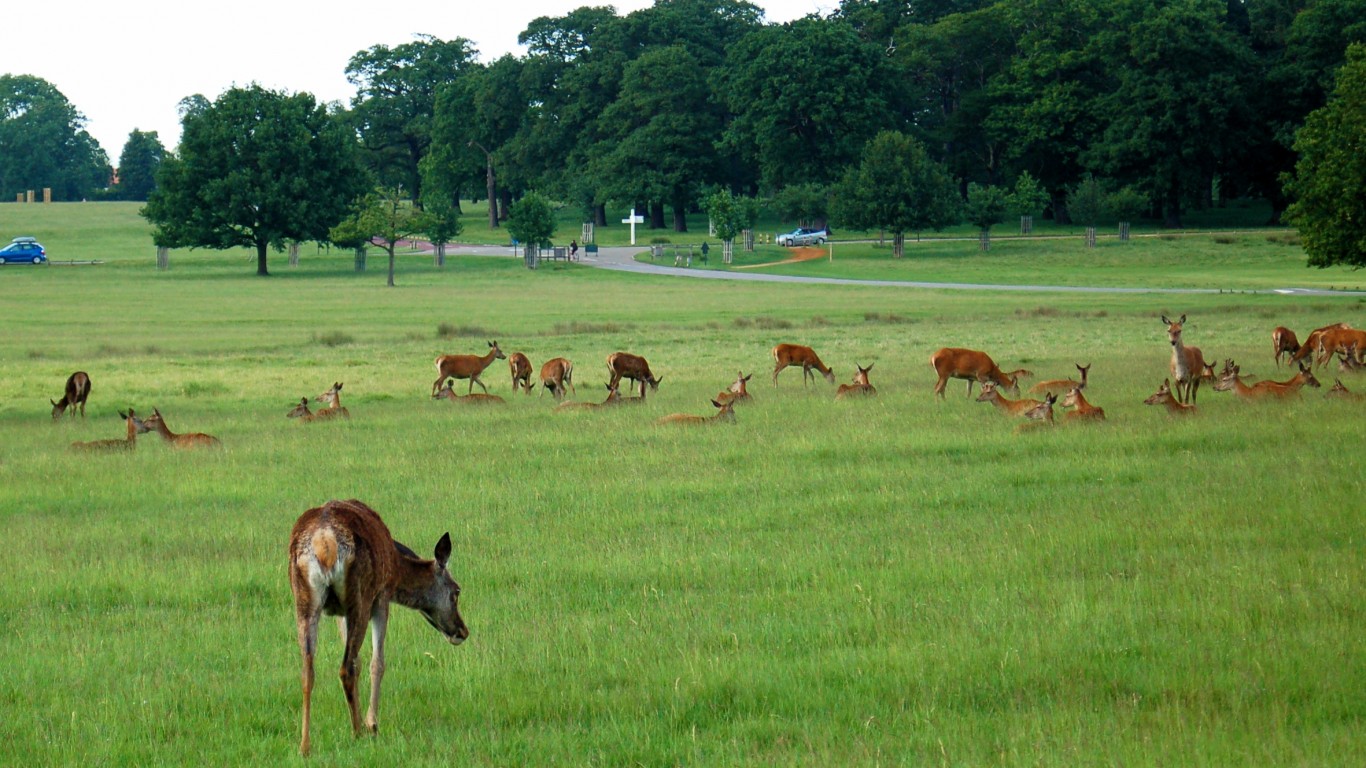
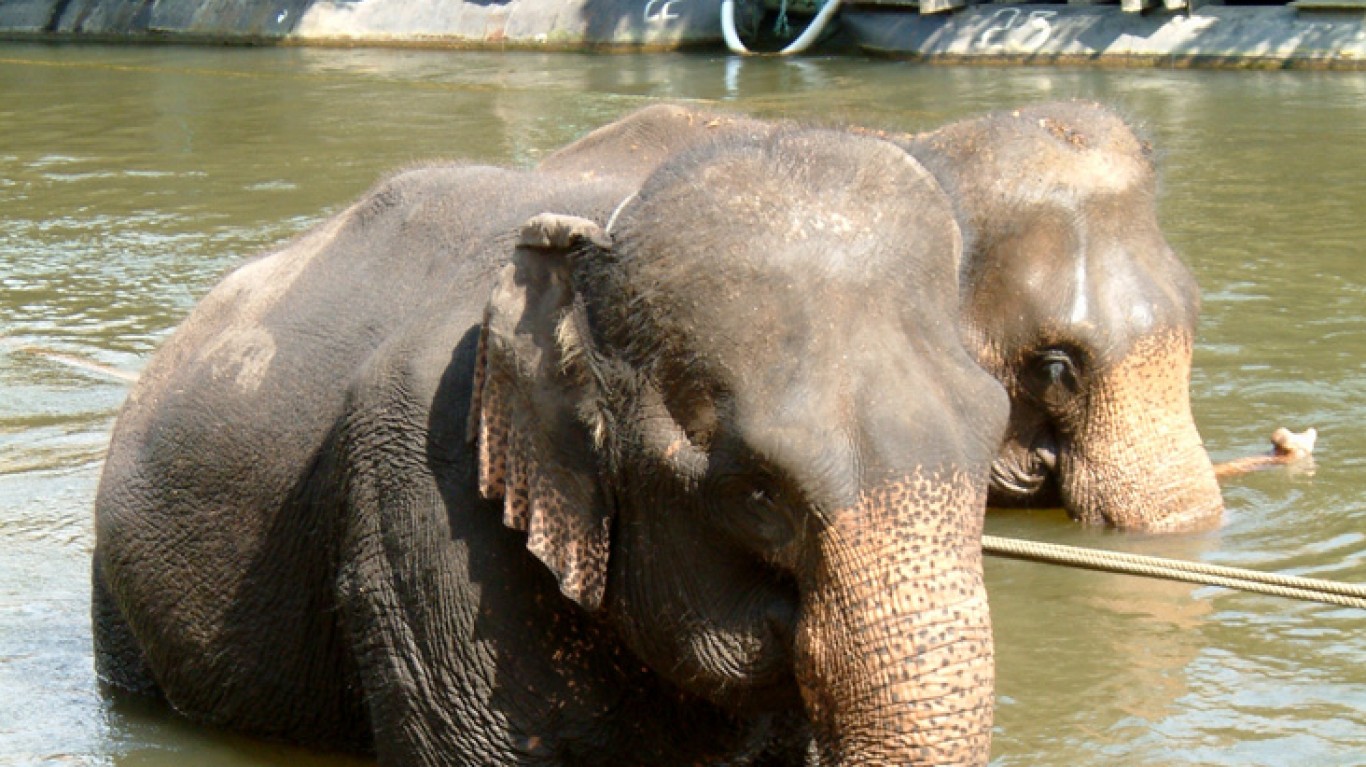
 24/7 Wall St.
24/7 Wall St.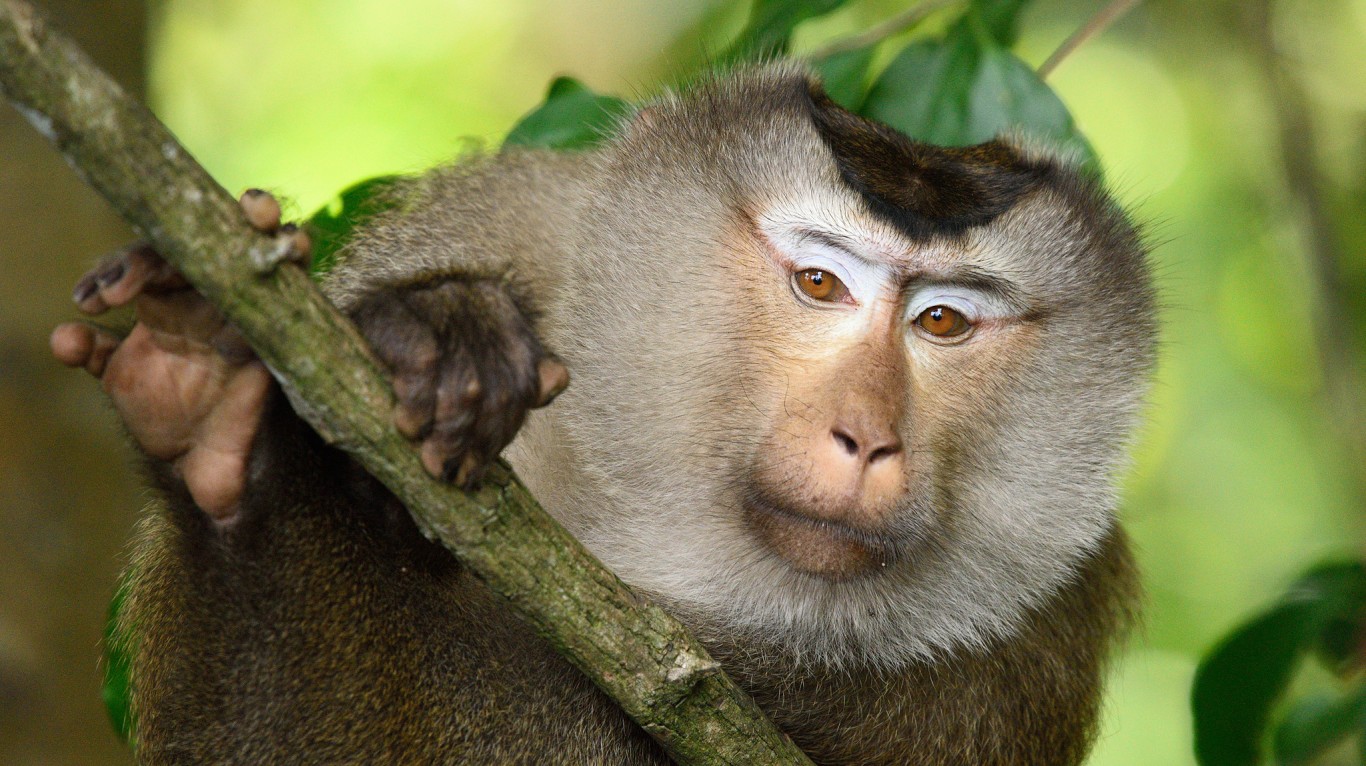
 24/7 Wall St.
24/7 Wall St.
